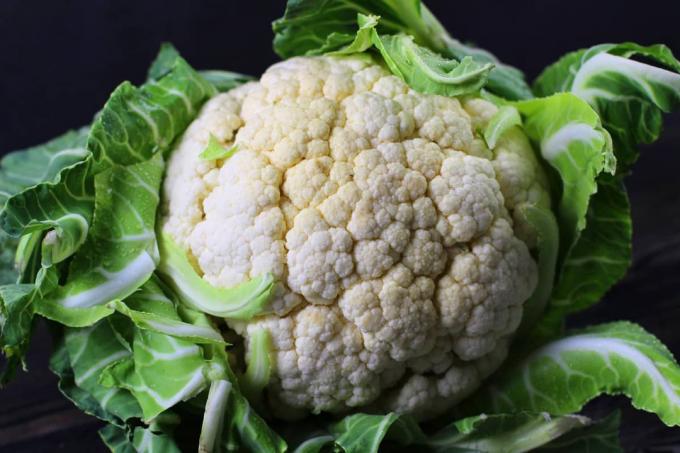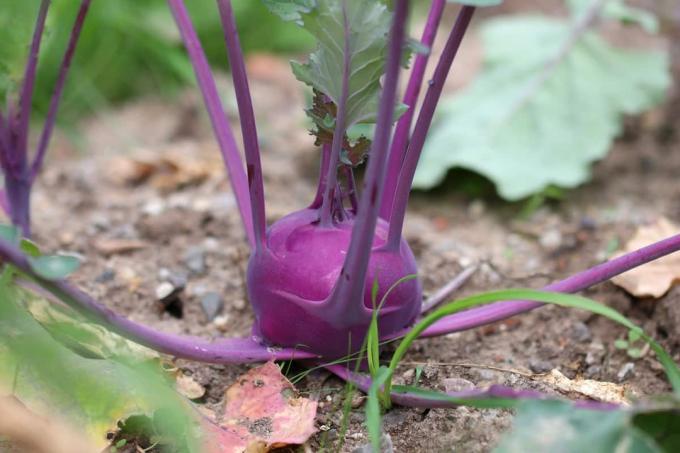

Table of contents
- Good neighbors for chard
- Acceptable neighbors
- bad neighborhoods
- Also note crop rotation
The chard needs neighbors in the bed, from whose presence the leafy vegetables ideally benefit. At least they shouldn't harm him. The large plant family offers some suitable candidates. This means that the mixed culture can turn out a little differently every year than in the previous year.
Good neighbors for chard
Good neighbors for Swiss chard (Beta vulgaris subsp. vulgaris), regardless of whether they are leaf chard or stem chard, are mainly found among the legumes, because they hardly take any nutrients away from this heavy feeder. Some members of the cruciferous family are also allowed to sit next to chard. Garlic with its essential oils is always worth considering because it keeps predators away and prevents fungal infestation. These are the nine best neighbors at a glance:
- Peas (Pisum sativum subsp. sativa)
- beans (Phaseolus vulgaris var. nope)
- broccoli (Brassica oleracea var. Italiana)
- Garlic (Allium sativum)
- cabbage (Brassica oleracea var. capitata)
- Kohlrabi (Brassica oleracea var. gongylodes)
- carrots (Daucus carota ssp. sativa)
- radish (Raphanus sativus subsp. sativa)
- radish (Raphanus sativus)

Tip:
Mediterranean herbs produce intensely fragrant essential oils that keep fungi and bacteria at bay in their wider environment. They should therefore definitely get a place in every mixed garden culture.
Acceptable neighbors
There are other crops that you can plant chard next to without worrying that this neighborhood will adversely affect it.
- artichokes (Cynara scolymus)
- cauliflower (Brassica oleracea var. botrytis)
- borage (Borago officinalis)
- strawberries (fragaria)
- fennel (Foeniculum vulgare)
- Nasturtium (Tropaeolum)
- turnips (Brassica rapa subsp. rapa var. majalis)
- parsnips (Pastinaca sativa)
- salad (Lactuca sativa)
Tip:
Reserve enough space for each chard plant to develop. A planting distance of 30-40 cm to other plants is therefore a must if the two are not to crowd each other.
bad neighborhoods
Competition is also the order of the day in the home garden when the roots of different plants run through the soil close together. If there are two strong consumers of nutrients, such as the Swiss chard, or two plants with similar nutrient preferences together, the fight for the coveted minerals breaks out. The stronger wins, the weaker takes care of itself. Or neither of them grows optimally. That's not what the gardener wants. There we have the explanation why the plants listed below do not go well with Swiss chard. At least not in the bed, in the saucepan it may be quite different.

- tomatoes (Solanum lycopersicum)
- garden cress (Lepidium sativum)
- cucumbers (Cucumis sativus)
- spinach (Spinacia oleracea)
- Beetroot (Beta vulgaris)
- arugula (Eruca sativa)
- salsify (Scorzonera hispanica)
Not only are these plant varieties not good companions for Swiss chard. If the size of the garden allows, they should not be planted or grown as a follow-up crop. be sown.
Also note crop rotation
When looking for good neighbors for the chard, the gardener's focus is only on the current year's planting plan. But also the location of the previous year or of previous years is crucial to its successful cultivation. Because a place once rooted by it must be avoided for at least three years. This is particularly important when diseases have developed in previously grown chard plants. But the old place of this biennial plant does not have to lie fallow, of course. As ideal postculture there is a universally popular tuber for Swiss chard: the potato (Solanum tuberosum).
 Home editorial office
Home editorial office
Learn more about vegetables

Mixed culture: 17 good neighbors of beetroot
Because of its uncomplicated nature, beetroot is often cultivated. To optimize the health and taste of root vegetables, it is advisable to plant good neighbors. These have a positive effect on growth and protect against pests and fungi.

12 good neighbors of cucumbers | mixed culture
Cucumbers are popular vegetables for mixed crops with other crops. Root vegetables are just as suitable as lettuce as plant neighbors. Plantings with kitchen herbs are attractive because they enrich the garden and kitchen. Flowering ornamental plants also improve growth.

10 good neighbors for onions | mixed culture
Good neighbors for onions or a beneficial mixed culture is not only natural, but It also reduces the maintenance effort, can keep pests away and the risk of disease to reduce. You can find out which plants are suitable here.

Mixed culture: 14 good neighbors of cauliflower
Cauliflower, also known as cheese or cauliflower, is a cultivated form of cabbage. It can be prepared in a variety of ways and can be eaten raw or cooked. Cultivation is not unproblematic, because cauliflower is very demanding.

Mixed culture: 11 good neighbors of kohlrabi
The kohlrabi likes to root next to many other plants, so a mixed culture with it is easy to implement. Not only does it grow splendidly and healthily. Even the scarce space in a house garden can be used optimally. Which are his favourites?

Cucumbers: Cultivation of cucumbers in greenhouses/outdoors
Cucumbers are one of the most popular vegetables in this country. So what could be more obvious than growing your own refreshing cucumbers. Because cucumbers are heat-loving plants, they thrive in a greenhouse. If you don't have a greenhouse, you can also cultivate different varieties outdoors. You can find out what you should consider when growing cucumbers here.
